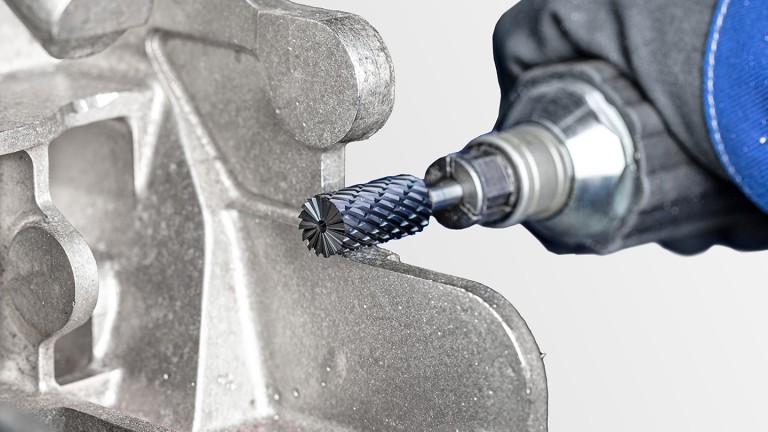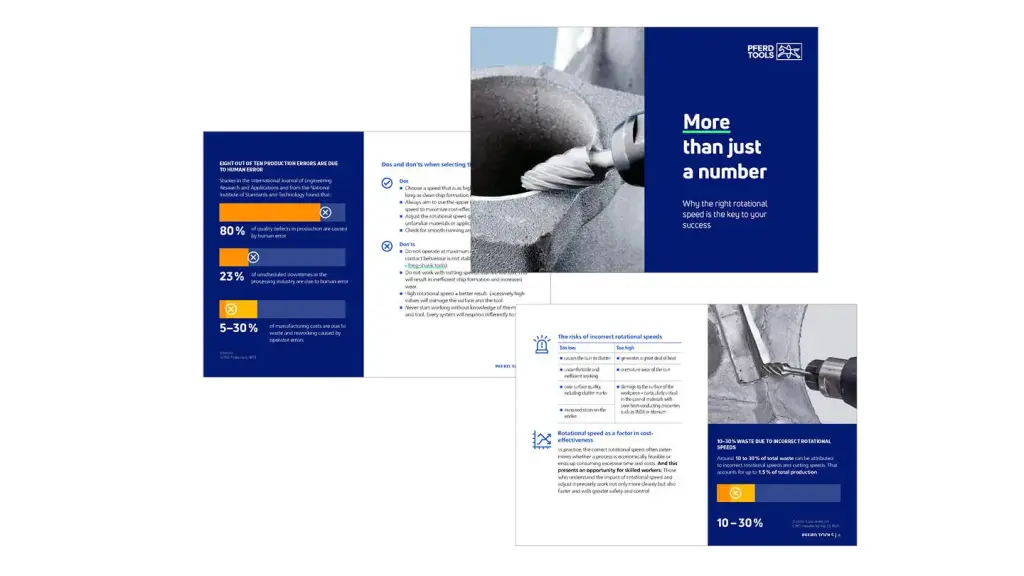
“End users in the metalworking industry are wasting valuable time and needlessly weakening their productivity and bottom line,” says Tobias Zipperer, Product Manager for Tool Drives at PFERD TOOLS, which manufactures tools for work on surfaces and the cutting of materials. “This is unsustainable in an era of cost pressures and a constant demand for greater efficiency.”
“We know that at least one parameter isn’t quite right in 90% of the applications we come across in our end users’ companies,” says Zipperer, referring to everyday working life in the metalworking industry. “These companies are wasting money here and causing cost pressures instead of adding value.”
The most common mistake made in this respect concerns the choice of drive system. While workers usually choose the tool based on the material being machined and the application in question, when it comes to the drive system many simply use what they already have or have always used. An optimum rotational speed and the correct power output are essential factors for efficient, profitable working. “A deviation of just 10 to 20% in the rotational speed significantly changes the machining process,” explains the Product Manager.
If we then also take a closer look at the choice of tool, we uncover huge potential to increase productivity. “We conducted tests with customers who were using a tungsten carbide burr with a conventional cross cut and a sub-optimal rotational speed, for example. By replacing the drive and using coated burrs with the ALLROUND HC-FEP and STEEL HC-FEP cuts, we soon increased the stock removal, in some cases significantly. We see this every day, and it’s precisely the potential that many companies fail to exploit, in an era when they cannot afford to waste any time or money.”
Holistic advice is key to drawing on these reserves of untapped productivity. “We must understand that milling, grinding and cutting processes involve various different parameters which all have to match one another – the material being machined, the application in question, the tool, and the right drive.” These aspects have to be coordinated with one another in order to ensure an economical process.
In this regard, PFERD TOOLS doesn’t just have the necessary expertise, it also occupies a unique position on the market as no other manufacturer offers the tool and drive from a single source in conjunction with application expertise spanning over 225 years. Time and time again, the company’s customers confirm that a single conversation or test is often enough to deliver major improvements. What’s more, the focus here isn’t just on productivity, as Tobias Zipperer highlights: “We’re also seeing increased interest in improving ergonomics, such as reducing vibrations, noise and dust. That’s usually something we can achieve as well.”
PFERD TOOLS has published a white paper on optimizing rotational speeds and processes, which answers many questions and illustrates how customers can exploit their reserves of untapped productivity and save time and money, simply by changing one particular area. The white paper can be downloaded from the PFERD TOOLS website (https://www.pferd.com/your-solution).
